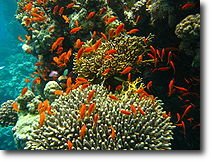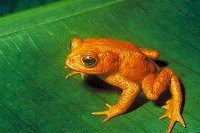Biosafety Protocol 1999
Author and Page information
This print version has been auto-generated from https://www.globalissues.org/article/174/biosafety-protocol-1999
The February 1999 Biodiversity Protocol meeting in Colombia broke down because USA, not even a signatory to the Convention on Biological Diversity, to which the protocol is meant to be part of, and five other countries of the "Miami Group" felt that their business interests were threatened1.
On this page:
5 countries vs. 130.
About 130 other countries wanted to implement a protocol2 that would act as a precautionary measure when dealing with living modified organisms (LMOs). Why? Because the safety of so many people and ecosystems could be at stake if it in fact turns out that some of the LMOs and other genetically engineered (GE) organisms appear to be dangerous to the environment. However, the Miami Group wanted the Biosafety Protocol to only apply to seeds and not commodities. It was also against3 requirements to label genetically modified products.
(Genetic engineering is a major topic of debate in most places, like Europe and Asia -- although, notably, not in USA -- as many argue whether or not GE related food, especially is safe or not. It is very difficult to tell because of no long term data and therefore caution seems to be a good idea due to the potential impacts if GE food turns out to be unsafe. There is a section on GE Food4 on this web site that provides a lot more information on the food related aspects of this subject. This section on the Biosafety Protocol covers what happened at the conference in Colombia5 that aimed to tackle the safety issues of living modified organisms, which not only affects food, which the GE Food section is about, but other areas where LMOs could be used, such as medicine.).
Instead of the safety concerns of over 130 countries, representing about nine tenths of the entire population of the planet, six countries were able to prevent this (USA, Argentina, Australia, Canada, Chile and Uruguay) on the grounds of free trade, or basically big business concerns6.
This group of six, known as the Miami Group want a free trade treaty and do not want countries to be able to have risk assessment and prior approval of any LMOs. They want this to fall under the WTO7 as well, which could enforce these preventions of safety checks. In other words, they appear to want to prevent a country8 to even try and implement any safety measures for its own people. This is basically like the ideas behind NAFTA and the MAI9.
"We will act multilaterally when we can and unilaterally when we must"
It is interesting to note here how the US have used the argument of the WTO as a place to ensure free trade, while with the emerging banana-related trade war10, the WTO was only used to get a ruling that favored US interests and then the US totally bypassed the WTO resolution process and started to impose sanctions on the European Union. (The above quote is from Madeline Albright, regarding the Iraq crisis in 1998, but very applicable here too.)
As suggested at the beginning of the GE Food section11, while the argument of whether LMOs, GMOs etc is actually safe or not, is important, so too is the way in which this question is being answered (or not, in some cases!). From what seems to have happened at this protocol, a country that isn't even a signatory to the underlying Convention for Biological Diveristy has been able to undermine a process which is trying to determine some precautionary measure while the safety questions get tackled.
Other issues are also pushed to the side line, as seen in the GE Food section12, such as labeling, patenting (or biopiracy, from the view points of indigenous peoples who lose the right to use their own knowledge), food security and costs of using these technologies. (This report13 from Oxfam also provides an excellent insight into many of these issues and how they affect developing nations.)
0 articles on “Biosafety Protocol 1999” and 2 related issues:
Biodiversity
 The variety of life on Earth, its biological diversity, is commonly referred to as biodiversity. The number of species of plants, animals, and microorganisms, the enormous diversity of genes in these species, the different ecosystems on the planet, such as deserts, rainforests and coral reefs are all part of a biologically diverse Earth. Appropriate conservation and sustainable development strategies attempt to recognize this as being integral to any approach. In some way or form, almost all cultures have recognized the importance of nature and its biological diversity for their societies and have therefore understood the need to maintain it. Yet, power, greed and politics have affected the precarious balance.
The variety of life on Earth, its biological diversity, is commonly referred to as biodiversity. The number of species of plants, animals, and microorganisms, the enormous diversity of genes in these species, the different ecosystems on the planet, such as deserts, rainforests and coral reefs are all part of a biologically diverse Earth. Appropriate conservation and sustainable development strategies attempt to recognize this as being integral to any approach. In some way or form, almost all cultures have recognized the importance of nature and its biological diversity for their societies and have therefore understood the need to maintain it. Yet, power, greed and politics have affected the precarious balance.
Read “Biodiversity” to learn more.
Environmental Issues
 Environmental issues are also a major global issue. Humans depend on a sustainable and healthy environment, and yet we have damaged the environment in numerous ways. This section introduces other issues including biodiversity, climate change, animal and nature conservation, population, genetically modified food, sustainable development, and more.
Environmental issues are also a major global issue. Humans depend on a sustainable and healthy environment, and yet we have damaged the environment in numerous ways. This section introduces other issues including biodiversity, climate change, animal and nature conservation, population, genetically modified food, sustainable development, and more.
Read “Environmental Issues” to learn more.
Author and Page Information
- Created:
- Last updated:
 Global Issues
Global Issues